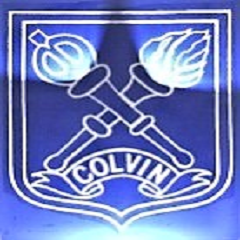
Gilbert Colvin Primary School
Computing
Intent
At Gilbert Colvin we recognise that the world we live in is becoming increasingly digital. Because of this, we know that we need to equip our children with the skills they need to thrive in this technological age. Computing lessons are a key part of this.
.png) Our computing education is broad and progressive, allowing our pupils to build on skills learnt in previous years and develop a thorough understanding of computers and the part they play in the wider world. In addition to this, online safety is embedded throughout our school curriculum, allowing our pupils to become resilient and safe when using the internet.
Our computing education is broad and progressive, allowing our pupils to build on skills learnt in previous years and develop a thorough understanding of computers and the part they play in the wider world. In addition to this, online safety is embedded throughout our school curriculum, allowing our pupils to become resilient and safe when using the internet.
We want children to develop as respectful, responsible and confident users of technology, aware of measures that can be taken to keep themselves and others safe online. Beyond teaching computing discreetly, we will give pupils the opportunity to apply and develop what they have learnt across wider learning in the curriculum.
Implementation
We follow the 'Teach Computing' scheme of work, which covers all aspects of the National Curriculum. This scheme has been created by subject experts and is based on the latest pedagogical research. Pupils will have regular explicit computing lessons in addition to completing cross-curricular project work.
A key part of implementing our computing curriculum is to ensure the safety of pupils. The 'Education for a Connected World' framework is embedded within the 'Teach Computing' curriculum, with clear links in each unit of work. It highlights what a child should know in terms of current technology, its influence on behaviour and development, and what skills they need to be able to navigate it.
We aim to develop our children’s understanding of computing by covering the following key areas. Through this, our pupils begin to understand the use and application of these skills in the real world:
- Computer science - using computational thinking to solve problems and creating things for different purposes. This involves creating algorithms which control simple characters, games and websites, or debugging to correct mistakes in their own and others’ programs.
- Digital literacy - teaching children to use a range of technology in a safe and responsible way.
- Information technology - ensuring that pupils understand how the devices they use function and have knowledge of the digital world.
Through these lessons, our pupils are also exposed to a variety of programmes and equipment, allowing them to develop vital IT skills which they can apply to a range of real life situations.
Impact
During their time at Gilbert Colvin, pupils gain an in-depth knowledge of computing and by the end of their primary career, have acquired the necessary knowledge and skills to ensure that they are ready for secondary school.
The way pupils showcase, share, celebrate and publish their work will best show the impact of our curriculum. We look for evidence through reviewing pupils' knowledge and skills digitally and observing learning regularly. The majority of computing units are project-based and the final outcome will be a finished project, e.g. a Scratch animation. Pupils also save their work within a class folder on the computer. Where a unit is teaching specific skills, an end of unit assessment is used to assess pupils' understanding of a topic.
Class teachers ensure that the children in their class have covered the relevant knowledge and skills using the subject-specific progression map. Subject leaders carry out 'deep dive' subject monitoring which includes a planning and book scrutiny, learning walk/lesson observations, and pupil voice.
What our children think about Computing at Gilbert Colvin Primary School
|
|
||
|
.png)